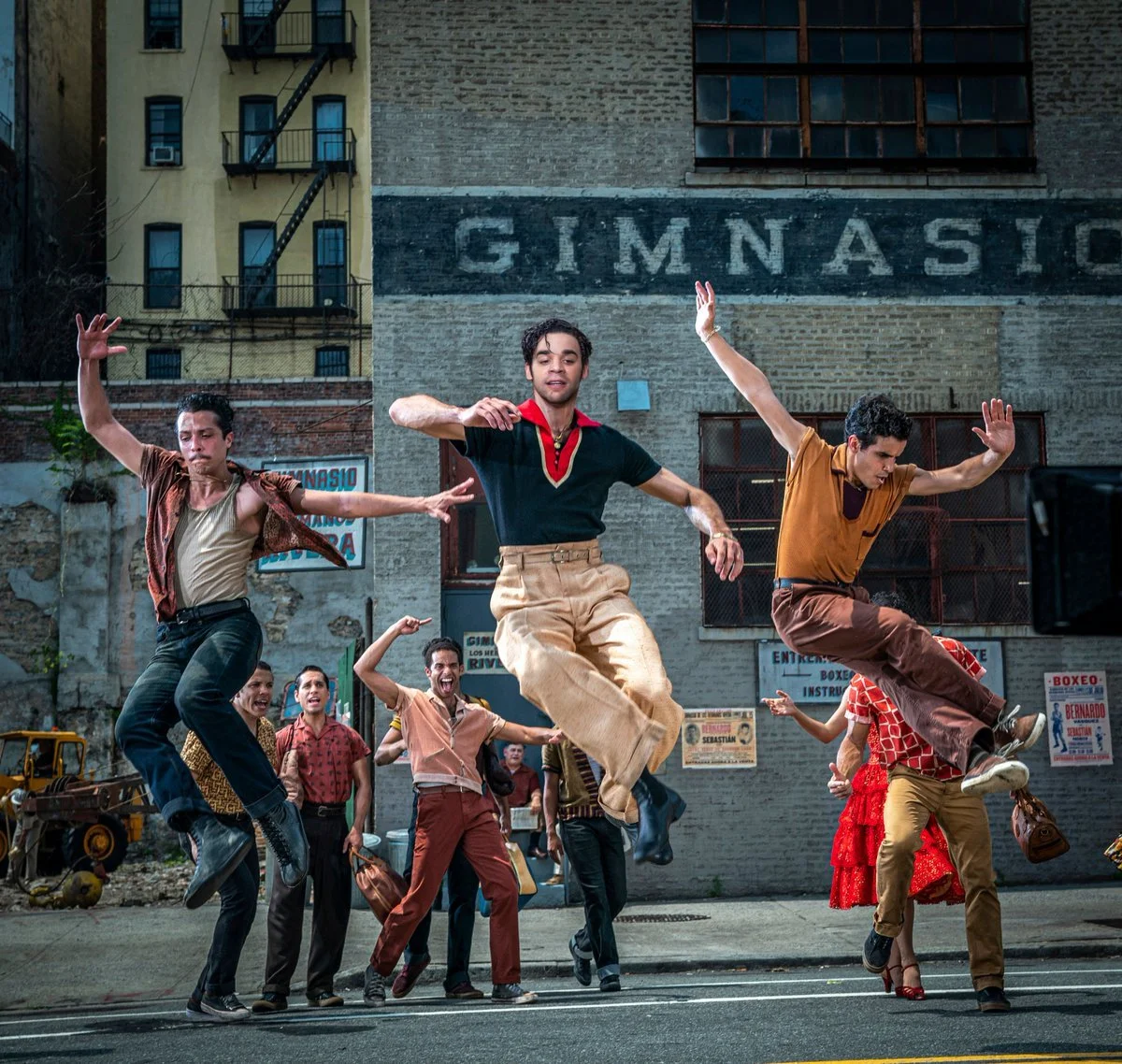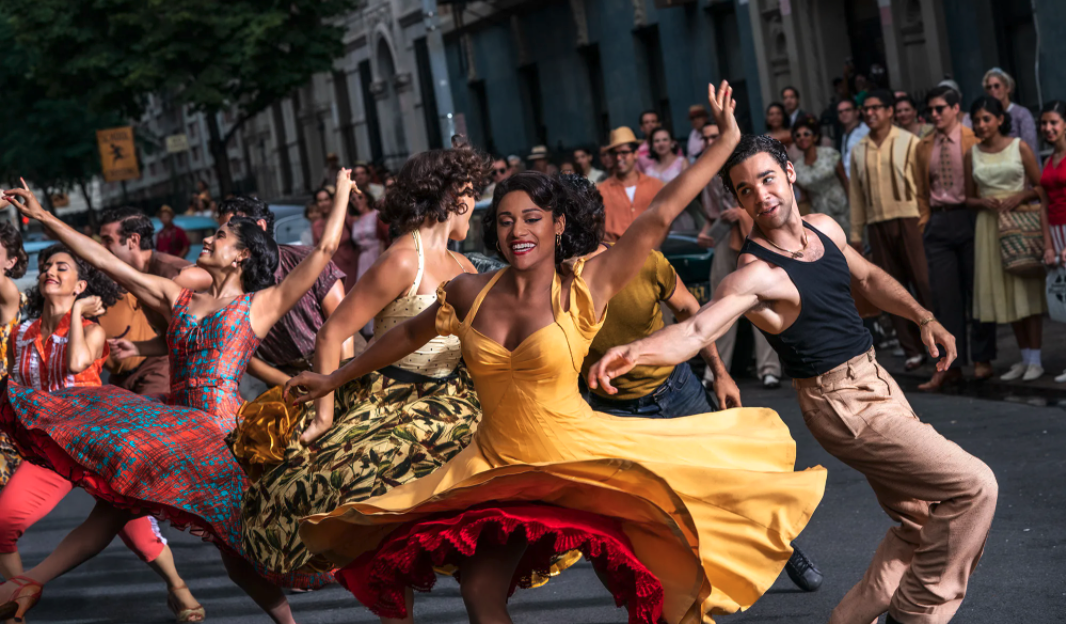Do yourself a favor, see Spielberg's 2021 rendition of West Side Story
Moving Pictures by Mo Burford
West Side Story (Steven Spielberg, 2021)
Technicolor is back!
Steven Spielberg’s reimagining of West Side Story is as emotionally captivating as it is breathtaking to behold. The singing, dancing, acting, and direction all come together in a nearly perfect union to bring an old story into the present. At 75, Spielberg’s films still have the movement and exuberance of a youthful filmmaker. And this film is draped in color, awash in color, unlike most contemporary films.
For those unfamiliar with West Side Story—which is itself a retelling of Romeo and Juliet—the film takes place in mid-1950’s New York, where two warring gangs vie for control of a neighbor that is in the midst of being torn down due to “urban renewal” (weirdly, this mirrors a huge plot point in The Batman too). The gangs are the Sharks, Puerto Rican youths led by boxer Bernardo (David Alvarez), and the Jets, white youths led by Riff (Mike Faist). Caught in the middle of it all is Maria (Rachel Zegler) and Tony (Ansel Elgort), who fall hopelessly in love, aided by Anita (Ariana DeBose) and Valentina (Rita Moreno).
With a score originally written by Leonard Bernstein with lyrics by Stephen Sondheim, alongside the film’s new choreography by Justin Peck and cinematography by Janusz Kamiński, West Side Story is a vision of modern film technique that pays homage to great musical film precursors like Singing in the Rain, The Wizard of Oz, and of course the original West Wide Story of 1961.
This is Steven Spielberg’s 34th film in a long career that has defined much of popular movie culture, from Jaws (1975) to Raiders of the Lost Ark (1985) to Jurassic Park (1993). These movies have defined the childhoods of multiple generations and given vision to the dreams of dinosaurs or aliens among us. Spielberg has also dedicated a significant portion of his career to shedding light on the past, from Schindler’s List (1993) and Saving Private Ryan (1998) to Bridge of Spies (2015). So in some ways this kind of period piece is nothing new for Spielberg, but—in the mode of great directors—it challenges its source materials in new ways.
In truth, West Side Story is the movie I had hoped 2016’s La La Land would be–great dancing, great singing, big choreography, and wide shots that show all of it off. There is something deeply impactful about seeing 40 people all singing and dancing in unison: it causes me to feel something like pure joy. And it reminds me that the work of making a film, both on-screen and off, is one of collaboration, choreography and magic.
The performances in the film are stunning. Ariana DeBose (now an Academy Award winner) leaps off the screen, along with Zegler, Alvarez and the rest of the cast. If I’m nitpicking, I’d say the weak link in the film is Ansel Elgort’s performance as Tony, but only in contrast to the absolute knockout performances of the film, leading his to be, at times, less impactful. But all the actors do a herculean amount of work singing and dancing, and it clearly pays off.
I also want to draw attention to the use of language in this film, which constitutes a big change from the original: There are whole dialogue exchanges that occur in Spanish and go untranslated for the audience, yet they remain, in my experience as someone who doesn't speak the language, deeply affecting. This departure from how Spanish is generally treated in American films creates an opportunity for the viewer to reflect on the dominant influence of the English language in America—even though, of course, we have no national language.
Throughout the film, cops and white English speakers tell Puerto Ricans to “speak English!” as if it’s the language of the neighborhood—yet another contested, shrinking space being fought over. This reversal of the established dynamic puts the viewer in a different cultural space than they might be accustomed to, allowing them to see another point of view. The fight over space—literal, cultural and linguistic—resonates deeply, in part because of how sadly relevant it feels.
“It overflows, and in the overflow the viewer is awash in the power of cinema, in the power of human collaboration, our collective capacity to make art and to tell stories. And even more so: to tell stories that matter.” - Mo Burford
In thinking about all this, I just pulled up the scene where the cast sings the classic, “America,” (one of strange benefits of the movie being available to stream already: I can revisit a specific scene with ease). Watching it again, even by itself, I marvel at the choreography and singing and acting that comes together, and it brings tears to my eyes. It is so beautiful and stirring. Listening to the song in 2022, it still speaks to the pleasures and sorrows of living in America as a person of color. But what I really want to get at here is that the scene feels like magic: the alchemical process of everyone’s work and technical skill coming together, with impeccable set design and camera movement, create something that fills my heart with a rare kind of excitement and joy.
It is worth saying bluntly that this is not the kind of filmmaking being done today. This movie is something only someone like Spielberg could make, with his clout and access to resources, and bless him for doing so. Here, we see the combination of work and creativity on full display: wide, overhead shots of ten couples dancing in time, surrounded by dozens of extras and even some little kids dancing along. Every step occurs on screen and cannot be faked. This stands in contrast to a lot of movies today that employ quick cutting between shots, which allow editors to then piece together scenes that appear cohesive, even when the components—action, dancing, playing instruments—are not. It overflows, and in the overflow, the viewer is awash in the power of cinema, in the power of human collaboration, our collective capacity to make art and to tell stories. And even more so: to tell stories that matter. At the heart of West Side Story is the simple but profound message that, while we fight amongst each other over a few city blocks, systemic structures are destroying the places we love right beneath our feet. It is a story about the power of love and the heartbreak of violence. And it is a movie that makes me cry just thinking about it.
I’ll end with a plea: Do yourself a kindness and see this movie. You won’t regret it.
★ ★ ★ ★ ★
(Five Stars)
West Side Story is available to stream on HBO Max and Disney+, and available to rent from all major services.
Questions, comments, movie suggestions? Email Mo at movingpicturesccc@gmail.com
For more reviews and to see his up-to-date movie log, follow Mo at Letterboxd


